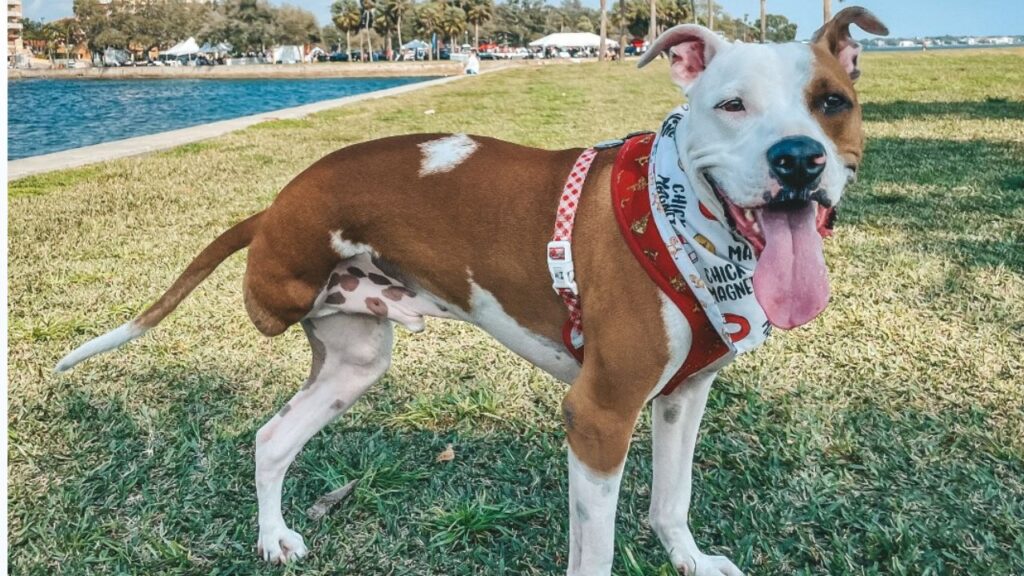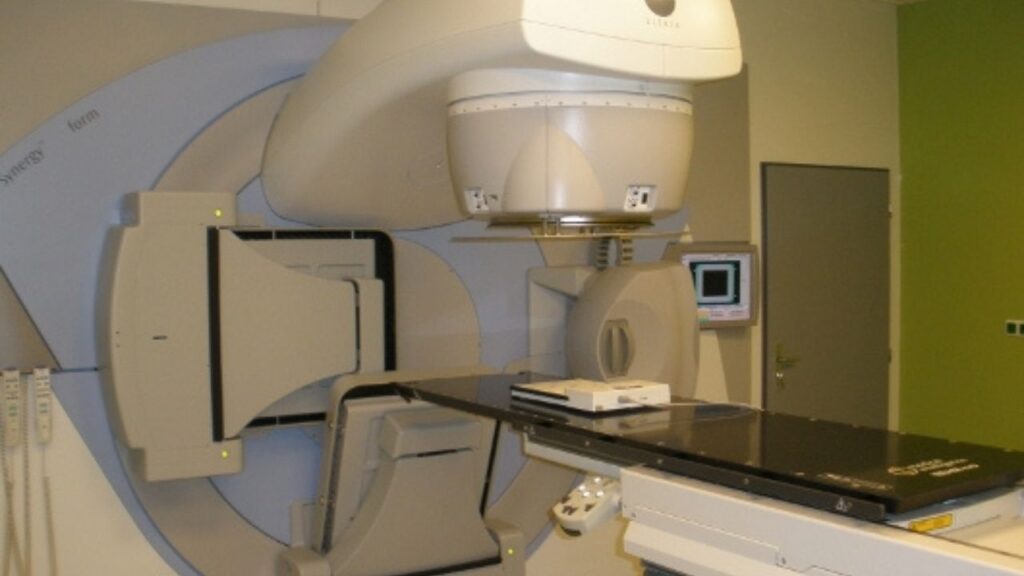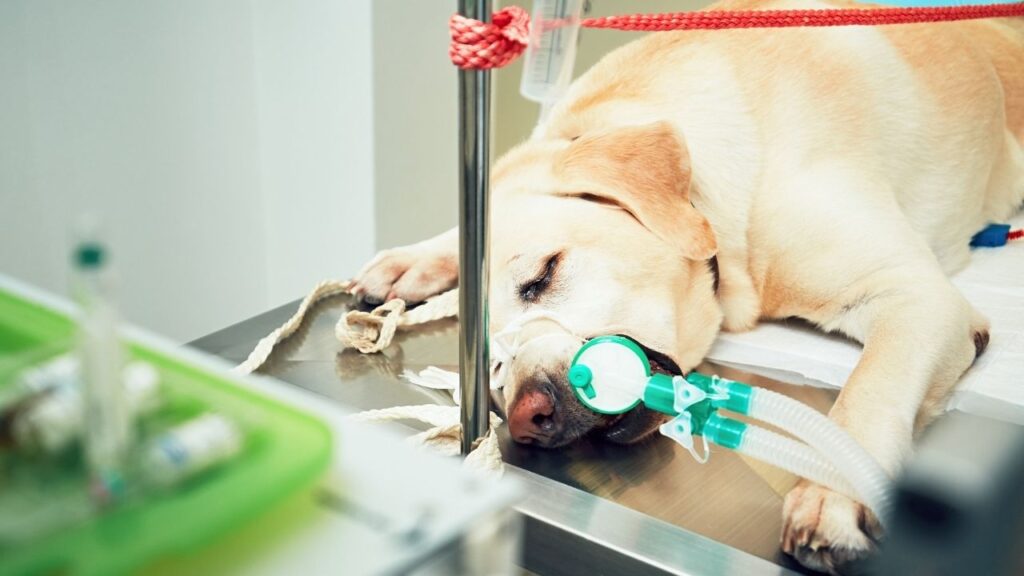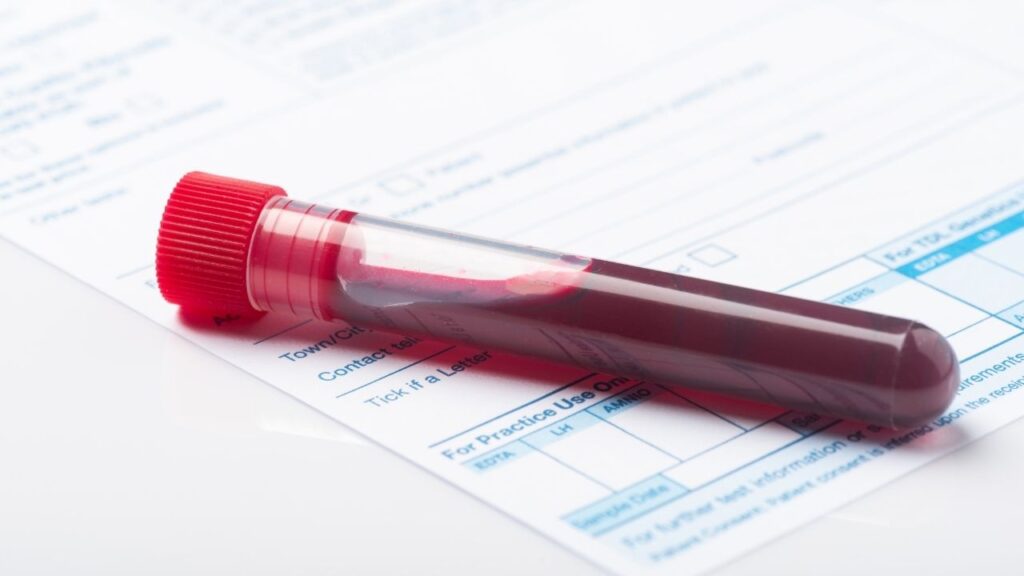Physical Therapy for Dogs
It’s heartbreaking to see your beloved dog become debilitated by cancer, but there are ways you can support their healing and help them regain mobility. Rehabilitation, which is usually what we call physical therapy for dogs, can be a powerful tool for older dogs weakened by cancer or those facing an amputation.
Key Takeaways
- Physical therapy is a valuable tool that can help any dog with an injury or illness that causes weakness, pain, or mobility problems.
- The best approach will vary based on your dog’s specific needs, so it is essential to work with a veterinarian or physical therapist certified in physical therapy for dogs.
- Physical therapy for dogs is not a one-size-fits-all tool. A certified rehabilitation practitioner can guide you on how to safely rehab your dog’s back legs, strengthen your dog’s back muscles, or address any other issue your dog may have.
Rehabilitation or Physical Therapy for Dogs
Like physical therapy for humans, physical therapy for dogs uses non-invasive techniques to promote recovery from injuries and surgery, improve mobility, and ease pain associated with osteoarthritis and other chronic conditions in animals.1
Most Veterinarians Don’t Use the Term Physical Therapy
Note that physical therapy is a protected term in many states. That means that in many states, only people who have a state license can use that term. Since human physical therapists usually use that protected term, you will more likely see this branch of veterinary medicine called rehabilitation (rehab) or physiotherapy.
Likewise, a veterinarian trained and certified in canine rehabilitation cannot call themselves a physical therapist; instead, you will see them listed as a rehabilitation practitioner, rehabilitation veterinarian, or simply a rehab vet.
Whichever term your state’s practitioners use, physical therapy for dogs is a lot like physical therapy for humans.
When Is Physical Therapy Recommended for Dogs?
The most obvious example of rehab for dogs with cancer is for those facing a limb amputation, but it can be helpful for dogs with any number of ailments.
Senior Dogs and Dogs wit Reduced Mobility
Almost any senior dog can benefit from physical rehabilitation, especially those with acute injuries, osteoarthritis, or other chronic musculoskeletal or neurological conditions.3
Veterinarians should recommend physical rehabilitation for any dog with muscle loss, weakness, reduced mobility, or pain for any reason.
Prehab Before a Surgery
A “prehab” appointment – rehabilitation started before surgery – can be beneficial for dogs facing surgery. Strengthening the other limbs before amputation or learning how to use assistive devices that may be needed after surgery can speed up the recovery process.
It can take a long time to rehabilitate a dog after an injury or surgery, so starting as soon as you are aware of an issue can help speed recovery.
Because rehabilitation is a newer field of veterinary medicine, it most often begins after surgery, or after the dog has already lost significant mobility. Being proactive can improve the chances of a better outcome.
What Veterinary Physical Therapy Specialists Need to Know
To get started on a rehab program, you and your dog will meet with a veterinarian or a physical therapist with specific training in physical rehabilitation. Veterinary technicians can also be trained in rehab for dogs and may also be an integral part of this team.
The First Visit
This initial visit will consist of getting a thorough history, including any previous injuries or surgeries, medications, supplements, activity level, etc. One of the most critical parts of this initial appointment is to discuss your goals and expectations.
This visit is also a good time to ask for tips and tricks for managing your dog’s needs in your home environment.
For example, suppose your dog is having an amputation, and you have a lot of stairs in your house. One of your goals may be that your dog can handle stairs well enough to go outside to the bathroom. Your rehabilitation practitioner can help you troubleshoot the obstacles to achieving this goal.
Hospitalized? Your Dog May Already Be in Physical Therapy!
If your dog is in the hospital, the rehabilitation process may start even before your dog is ready to go home. Many specialty hospitals have veterinarians or veterinary technicians trained in rehab for dogs and will incorporate some of the modalities discussed below into their hospitalization care plan.
Exam and Understand
Once your rehabilitation practitioner understands your and your dog’s needs, they will conduct a thorough exam. This exam will help to get an overall picture of how your dog is doing and identify any problem areas of the body. For example, a dog with a rear limb amputation will usually be sore in the shoulder and spinal muscles due to compensating for the lost limb.
This exam will also help you figure out what your dog is capable of. Some dogs lose mobility not because they can’t do something, but because they don’t want to due to fear or pain.
Planning Physical Therapy
After the exam, your rehabilitation practitioner will work with you to devise a plan. Depending on your and your dog’s needs and goals, this plan could include multiple weekly visits for different modalities or may simply be a home program with periodic check-ins.
This plan will change as your dog’s status changes, so periodic re-evaluation is essential even if you are not bringing your dog in for regular rehabilitation appointments.
Common Physical Therapy Strategies
Rehabilitation encompasses many modalities depending on the facility and the practitioner. Some of the most common modalities used in rehabilitation include:
- Therapeutic exercises (specific exercises for strengthening, balance, and coordination)
- Cold or heat therapy
- Manual therapies (massage, trigger point release, joint mobilizations, stretching)
- Laser therapy
- Hydrotherapy (underwater treadmill, swimming)
- Therapeutic ultrasound
- Transcutaneous electrical nerve stimulation (TENS)
- Pulsed electromagnetic field therapy (PEMF)
- Shockwave
Let’s look at some of these in more detail.
Therapeutic Exercises
Therapeutic exercises are the cornerstone of physical rehabilitation. These exercises encourage strengthening, balance, coordination, and improved mobility.
We know that after just one day of muscle disuse, it can take up to three days to regain lost strength. Once muscles begin to atrophy, contractures, cartilage and ligament degeneration, and decreased bone mineral content can occur within three weeks.1,3,4
For debilitated or immediate post-surgical dogs, the initial therapeutic exercises may only be gentle passive range of motion (pROM) or isometric exercises. Isometric exercises are static exercises that produce little to no visible movement, such as simply placing a debilitated patient in a normal sternal (lying upright) position and having them hold it as long as possible.
Passive range of motion exercises are performed to help maintain joint mobility (more on these below) in injured or immobile dogs. Your rehabilitation practitioner will prescribe more advanced exercises as your dog improves.4
For more mobile dogs, your rehabilitation practitioner will choose exercises based on your goals and your dog’s needs. For example, if your dog needs to go up or down stairs, your rehabilitation practitioner will focus on exercises to strengthen the muscles required to do this activity. If your dog’s biggest issue is weakness in the hind legs, your home exercise program will focus on therapy to strengthen your dog’s hind legs.
Your home exercise program consists of the exercises you will perform at home, sometimes up to three times a day. It’s helpful to keep a journal on your dog’s progress and exercise response. As your dog gains stamina, more repetitions and more advanced exercises can be prescribed.
Assistive devices, such as supportive harnesses, carts, wheelchairs, and ramps, are sometimes incorporated into the physical rehabilitation protocol. These devices can help support your dog until her condition is improved enough not to need them, or they may be used in the long-term to give your dog as much support as she needs to encourage movement or upright posture. When used correctly, this can give your dog more freedom in mobility and allow her to be more involved in the family dynamic.
You might be tempted to just get some equipment and get started with your dog. Keep in mind that rehabilitation practitioners usually have the most experience in choosing, fitting, and helping you and your dog learn the proper use of these assistive devices.
Working with a rehab practitioner to learn the proper use of these devices can help set you and your dog up for success.
Cryotherapy
Cryotherapy (cold therapy) causes peripheral muscle and blood vessel constriction, which can help reduce muscle spasms, swelling, pain, and inflammation. Cold therapy is best used in the first 72 hours after an acute injury or surgery.1-4
Heat Therapy
Thermotherapy (heat therapy) increases circulation and makes tissues more pliable, decreasing joint and tissue stiffness. Moist heat penetrates more deeply than dry heat. Adding heat 72 hours after an injury or surgery is usually safe, but premature heat application may worsen swelling and pain. If in doubt, ask your rehabilitation practitioner.1-4
Passive Range of Motion (pROM)
Passive range of motion (pROM) exercises involve moving a joint through its available range of motion. These can increase the range of motion within the joint, increase blood flow and improve the production and diffusion of normal joint fluid. All of these effects are beneficial for decreasing pain and improving mobility.1-4
These are commonly recommended as part of a home exercise program, especially right after surgery, and your rehabilitation practitioner will show you how to do these exercises safely.
Massage
Not only do most dogs love massage, but it can also be a valuable part of a rehabilitation program.
Massage increases blood and lymphatic flow, helps break down tissue adhesions, reduces swelling, relieves muscle spasms, and improves muscle soreness. Massage can be beneficial for relieving tight muscles that are overused because of an amputated or painful limb.4
Your rehabilitation practitioner can show you how you can easily incorporate massage and stretching into your dog’s home exercise program.
Laser
Laser therapy uses light energy to affect the underlying tissues where it is applied. It has many uses in rehabilitation, most notably decreasing pain and inflammation, promoting new blood vessel formation (angiogenesis), and stimulating the rebuilding of damaged tissues.1-5
A laser is a special type of equipment typically only available at a veterinary facility, though in some areas, lasers are becoming available to rent for regular home use. If you use a laser therapy system at home, please ask your veterinarian or rehab specialist for specific instructions for your dog’s therapy. In general, do not laser tumors directly. There is a risk of burning the skin or the eyes if lasers are used improperly.
Therapeutic Ultrasound
Therapeutic ultrasound uses high levels of sound waves that can heat, ablate, or break up tissue.8 In veterinary rehabilitation, it is mainly used for tissue heating, pain relief, and breaking up areas of calcification.
Like thermotherapy, its tissue heating effect improves tissue pliability and relieves pain, but because it penetrates more deeply, it can be used for larger muscles.1-4
Care must be taken, as therapeutic ultrasound can burn hair and tissues when misused. It should not be used directly over a malignancy, actively bleeding tissues, or recently irradiated tissues.9
A therapeutic ultrasound is a specialized piece of equipment that is only available through a veterinarian or other rehabilitation practitioner.
PEMF
Pulsed electromagnetic field therapy (PEMF) decreases inflammation and increases blood and lymph flow, which speeds up wound healing and reduces pain.
It can be safely used for wound healing (injuries or incisions), to reduce swelling, and reduce both acute and chronic pain, making it a good adjunct treatment for post-operative pain. In humans and dogs, it was shown to decrease the use of opioids needed for pain management.1-3,6,7 Devices such as the Assisi Loop make this an excellent option for use as part of your dog’s at-home rehabilitation program.
Electrical Therapy
Transcutaneous electrical nerve stimulation (TENS) and neuromuscular electrical nerve stimulation (NMES) are both modalities that use a low level of electrical stimulation to cause their desired effect.
TENS is mainly used for pain relief. It provides pain relief by mildly stimulating pain fibers in the skin, causing fake pain signals that bombard the brain and compete with actual pain sensation.1-4
NMES uses slightly stronger electrical stimulation to cause muscle contractions. This can be used to help strengthen muscles in dogs that are too weak to exercise.1-4
With some direction, both of these modalities can be used as part of your at-home rehabilitation program.
Shockwave Therapy
Shockwave therapy uses high-frequency sound waves to disrupt a chronic injury or area of chronic pain, causing a new acute anti-inflammatory response in the body. This results in the release of several growth factors, reducing inflammation and pain, and speeding up the healing of chronic injuries.1-4
Shockwave therapy typically requires sedation or anesthesia, so it must be performed at a veterinary hospital.
Treadmills and Underwater Treadmills
Rehabilitation practitioners sometimes use a regular treadmill to strengthen muscles and build endurance. The treadmill can be slanted uphill or downhill to strengthen your dog’s hind legs or front legs, based on your dog’s specific needs.
The moving belt also promotes better proprioceptive feedback to the brain.1-4 If you have a treadmill at home, with direction from your rehabilitation practitioner, it may be a helpful tool for your dog’s at-home rehabilitation program.
An underwater treadmill is typically only found in larger veterinary hospitals or specific veterinary rehabilitation clinics. The benefits of walking in warm water include:
- Buoyancy – reducing the pressure on sore joints and supporting the dog in an upright position can help some dogs exercise more without worsening joint pain.4
- Hydrostatic pressure – reduces swelling and improves blood flow. It also decreases the sensitivity of pain receptors, resulting in less pain.4
- Resistance – walking in water provides resistance, helping strengthen muscles and improve endurance.4
Physical Therapy May Help Certain Cancers
Physical therapy and rehabilitation can benefit almost any older dog, especially those with cancers affecting a leg or impairing mobility, such as osteosarcoma or soft tissue sarcoma.3,4 It is also beneficial for dogs with osteoarthritis and other chronic musculoskeletal or neurological conditions.
How to Get the Best Results from Physical Therapy for Dogs
Just like you won’t see much improvement by only going to the gym once a month, the single-most important part of a physical rehabilitation program for your dog is to be consistent with their specific program.
Working closely with a rehab practitioner to develop a safe and sustainable program, including daily exercises to do at home, is your best bet for a successful program to rehab your dog. Part of this includes setting realistic goals and expectations for yourself and your dog at the beginning of the program and reassessing these periodically.
Pain management is also a crucial part of a successful rehabilitation program. A suitable pain management protocol is often multi-modal and may consist of pain medications, supplements, and some of the modalities discussed above.
Having a well-rounded veterinary team in place to collaborate as needed will also help your dog achieve the best outcome. This may include your primary care veterinarian, oncologist, surgeon, pain management specialist, and rehabilitation practitioner.
Home Care
Depending on your dog’s specific condition and needs, home care generally consists of a consistent home exercise program.
For some dogs, especially immediately after surgery, this will focus on nursing care and may include exercise restriction (crate or pen rest) with very short, leashed walks 2-3 times per day. For others, the home program may be a 20-minute walk followed by specific stretching and strengthening exercises.
This will vary dramatically, so working with a rehab practitioner to develop a plan unique to your dog and her current needs is essential. Your dog’s plan will change as her condition changes, so it is important to update this plan with your rehab practitioner regularly.
Follow Up
Your rehabilitation practitioner will work with you to develop a program that fits your goals and your dog’s needs, including scheduled follow-ups.
Whether your dog’s program includes multiple visits per week or is more focused on the home exercise program, it’s essential to follow up regularly. These follow-ups allow your rehab practitioner to reevaluate your dog and update her home program as needed.
When Physical Therapy Is Not Recommended
Some of the modalities discussed above are not safe for use directly over tumors, such as laser therapy and therapeutic ultrasound. The underwater treadmill should be used with caution in dogs with IBD or recent diarrhea and those with laryngeal paralysis.
For very sick or debilitated dogs, care should be taken to use only very gentle manual therapies, exercises, and pain management modalities.
Where to Find Physical Therapy for Your Dog
Rehabilitation should only be performed by a licensed veterinarian trained in animal rehabilitation or, where in accordance with state practice acts, by a licensed veterinary technician or physical therapist trained in veterinary rehabilitation. In many states, non-veterinarians must be under the supervision of a veterinarian to perform rehabilitation on animals.1,4
Rehabilitation continues to become the standard of care, making it easier to find dog physical therapy near you. Some family veterinary practices and many specialty hospitals have veterinarians that are trained in rehabilitation, and there are many stand-alone rehabilitation clinics for pets. The following organizations have directories on their websites to help you find a rehabilitation practitioner in your area:
- American Association of Rehabilitation Veterinarians
- Canine Rehabilitation Institute
- Northeast Seminars/University of Tennessee
- American College of Veterinary Sports Medicine & Rehabilitation
- International Veterinary Academy of Pain Management
Safety and Side Effects
Rehabilitation is very safe and effective when used conscientiously by a practitioner with specific training in dog rehab.
The Cost of Physical Therapy for Dogs
The initial evaluation is usually the most time-consuming and costly part of a rehabilitation program, with an estimated cost of $150-350. During this appointment, your rehabilitation practitioner will develop a recommended program that depends on your dog’s specific needs and your own goals and abilities (including finances).
Additional appointments will cost anywhere from $50-300, depending on the plan and modalities used.
- American Association of Rehabilitation Veterinarians website http://rehabvets.org/what-is-rehab.lasso .
- Janet Van Dyke, DVM, ACVS. Western Veterinary Conference 2015. Physical Modalities in Rehabilitation: Do You Really Need That Laser?
- Matthew Brunke, DVM, CCRP, CVPP, CVA, DACVSMR. Conference Proceedings: Managing DJD: Beyond the NSAIDS. Presented to VMANYC 2018.
- Millis D, Levine D. Canine Rehabilitation and Physical Therapy. Elsevier 2014.
- Riegel RJ, Godbold, Jr. JC. Laser Therapy in Veterinary Medicine. Wiley Blackwell 2017.
- Markov MS. Electromagnetic Fields in Biology and Medicine. CRC Press 2015. “Pilla AA: Pulsed Electric Fields: From Signature to Healing” Pgs 29-47.
- Zidan N, Fenn J, et al. The Effect of Electromagnetic Fields on Post-Operative Pain and Locomotor Recovery in Dogs with Acute, Severe Thoracolumbar Intervertebral Disc Extrusion: A Randomized Placebo-Controlled, Prospective Clinical Trial. J Neurotrauma 2018 Aug 1;35(15):1726-1736.
- Ultrasound. National Institute of Biomedical Imaging and Bioengineering. https://www.nibib.nih.gov/science-education/science-topics/ultrasound#:~:text=When%20used%20in%20an%20ultrasound,tissue%20or%20tissue%20and%20bone). Published July 2016. Accessed March 28, 2023.
- Houghton P, Nussbaum E, Hoens A. Electrophysical Agents – Contraindications and Precautions: An Evidence-Based Approach to Clinical Decision Making in Physical Therapyng in physical therapy. Physiotherapy Canada. 2010;62(5):1-80. doi:10.3138/ptc.62.5
Topics
Did You Find This Helpful? Share It with Your Pack!
Use the buttons to share what you learned on social media, download a PDF, print this out, or email it to your veterinarian.






